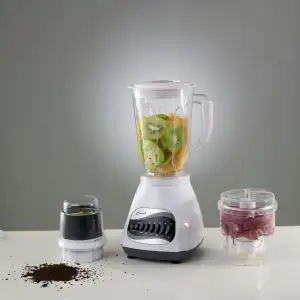Rust Be Gone: Mastering the Art of Cleaning Rusty Cast Iron at Home

Cast iron cookware is a beloved kitchen staple for many home cooks. Its durability and heat retention make it ideal for cooking a wide range of dishes. However, over time, cast iron can develop rust, which not only affects its appearance but also its performance. Cleaning rusty cast iron may seem like a daunting task, but with the right techniques and supplies, you can restore your cookware to its former glory. In this article, we will guide you through the process of cleaning rusty cast iron at home, ensuring that your culinary dreams are not tarnished by unsightly rust. So let's roll up our sleeves and get ready to banish rust from your cast iron collection!
Gather necessary supplies for cleaning
To effectively clean rusty cast iron, it is essential to gather the necessary supplies beforehand. These items will help in the removal of rust and restore the cast iron's original shine. The supplies needed include white vinegar, a brush or scrub pad, a rust remover solution, paper towels or cloth, and vegetable oil for seasoning. Having these supplies ready will ensure a smooth and efficient cleaning process.
Preparing the cast iron for cleaning
Before diving into the process of cleaning rusty cast iron, it is essential to prepare the cookware properly. Start by removing any food residue or debris from the surface using a stiff brush or scraper. Next, rinse the cast iron under warm water and use a mild dish soap to remove any remaining grease or oil. Avoid using harsh chemicals or abrasive cleaners as they can damage the seasoning on the cast iron. Once cleaned, dry the cookware thoroughly with a clean towel to prevent further rusting.
Using vinegar to remove rust
Using vinegar is a cost-effective and natural way to remove rust from your cast iron. Start by filling a container large enough to submerge the rusty areas with equal parts white vinegar and water. Place the cast iron in the solution and let it soak for at least a few hours, or overnight for heavily rusted pieces.
The acidity of the vinegar helps dissolve the rust, making it easier to remove. After soaking, use a brush or scrub pad to gently scrub away the loosened rust. For stubborn spots, you can create a paste by mixing vinegar with baking soda and applying it directly to the affected areas.
Remember to wear gloves and work in a well-ventilated area when using vinegar as it has a strong odor. Once you have removed all the rust, rinse the cast iron thoroughly with water and dry it completely.
Vinegar is an effective rust remover, but keep in mind that it may not be suitable for all types of cast iron cookware. It is always best to check with the manufacturer's recommendations before using any cleaning method on your cast iron.
Scrubbing away the rust with a brush or scrub pad
Scrubbing away the rust is an essential step in restoring rusty cast iron. Once you have soaked the cast iron in vinegar and removed any loose rust, it's time to get scrubbing. Use a stiff brush or scrub pad specifically designed for cast iron cleaning. Start by applying some dish soap or a paste made of baking soda and water to the surface of the pan. Then, using firm pressure, scrub the rusted areas in a circular motion. Be sure to cover all sides of the cast iron, including the handle and any intricate designs. Continue scrubbing until all visible rust has been removed. Remember to be gentle yet thorough to avoid damaging the surface of your cast iron cookware.
Applying a rust remover solution
Applying a rust remover solution is an effective step in restoring rusty cast iron to its former glory. There are various commercial rust remover solutions available in the market, but you can also make your own at home using ingredients like lemon juice or baking soda.
To apply the rust remover solution, start by pouring a small amount onto the affected areas of the cast iron. Use a soft cloth or sponge to gently rub the solution into the rusted spots. Allow the solution to sit on the surface for a few minutes, giving it time to penetrate and dissolve the rust.
After letting it sit, use a brush or scrub pad to scrub away any remaining rust particles. Be sure to use gentle pressure and avoid scratching the surface of the cast iron. Rinse off the solution with warm water and inspect for any remaining rust.
If necessary, repeat this process until all traces of rust have been removed. Remember to always follow the manufacturer's instructions when using commercial rust remover solutions.
Applying a rust remover solution is an essential step in restoring rusty cast iron cookware back to its original condition. By effectively removing rust, you can ensure that your cast iron will be safe for cooking and will last for many years to come.
Seasoning the cast iron after cleaning
Seasoning the cast iron after cleaning is a crucial step to ensure its longevity and prevent future rusting. To season the cast iron, start by preheating your oven to 350°F (175°C). Next, apply a thin layer of vegetable oil or flaxseed oil to the entire surface of the cast iron, including the handle. Make sure to use a cloth or paper towel to evenly distribute the oil.
Place the oiled cast iron upside down on the middle rack of your oven and bake it for about an hour. This process allows the oil to polymerize and form a protective layer on the surface of the cast iron, making it resistant to rust and providing a non-stick surface for cooking.
After an hour, turn off the oven and let the cast iron cool completely inside before removing it. Once cooled, wipe off any excess oil with a clean cloth or paper towel. Your cast iron is now seasoned and ready for use.
Remember that seasoning should be done periodically to maintain its protective layer. Each time you clean your cast iron, reapply a thin layer of oil and repeat the seasoning process.
By properly seasoning your cast iron after cleaning, you can enjoy its many benefits in your kitchen for years to come.
Proper storage and maintenance to prevent future rusting
Proper storage and maintenance are crucial to prevent future rusting of your cast iron cookware. After cleaning, make sure the cast iron is completely dry before storing it. Moisture can lead to rust formation. To avoid this, you can place a paper towel inside the cookware to absorb any remaining moisture.
To further protect your cast iron from rust, apply a thin layer of cooking oil or shortening to the surface. This creates a barrier between the metal and air, preventing oxidation. Be sure to coat both the interior and exterior surfaces.
Store your cast iron in a cool, dry place with good ventilation. Avoid storing it in humid areas such as under the sink or near a dishwasher.
Regular maintenance is also important in preventing rust. After each use, clean your cast iron with hot water and a brush or sponge. Avoid using soap as it can strip away the seasoning layer. Dry the cookware thoroughly before storing.
If you notice any signs of rust starting to form, address it immediately by following the steps mentioned earlier in this article.
By following these storage and maintenance practices, you can enjoy your rust-free cast iron cookware for years to come.
In conclusion, cleaning rusty cast iron can be a simple and rewarding process. By following the steps outlined in this article, you can restore your cast iron cookware to its former glory. Here are some final tips to help you maintain rust-free cast iron:
1. Dry thoroughly: After cleaning, make sure to dry your cast iron completely. Any residual moisture can lead to rust formation.
2. Apply a thin layer of oil: To prevent future rusting, apply a thin layer of oil to the surface of your cast iron after each use. This will create a protective barrier against moisture.
3. Store properly: Store your cast iron in a dry place with proper ventilation. Avoid stacking multiple pieces together as this can trap moisture and promote rust formation.
4. Avoid harsh detergents: When cleaning your cast iron, avoid using harsh detergents or abrasive cleaners as they can strip away the seasoning and leave the surface vulnerable to rust.
5. Regular maintenance: Periodically inspect your cast iron for any signs of rust or wear. If you notice any spots starting to form, address them promptly before they worsen.
By following these tips and incorporating regular maintenance into your routine, you can enjoy rust-free cast iron cookware for years to come. Happy cooking!
Published: 06. 03. 2024
Category: Home



